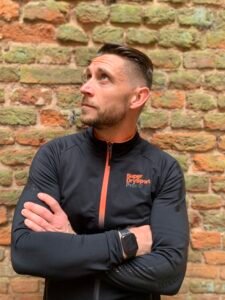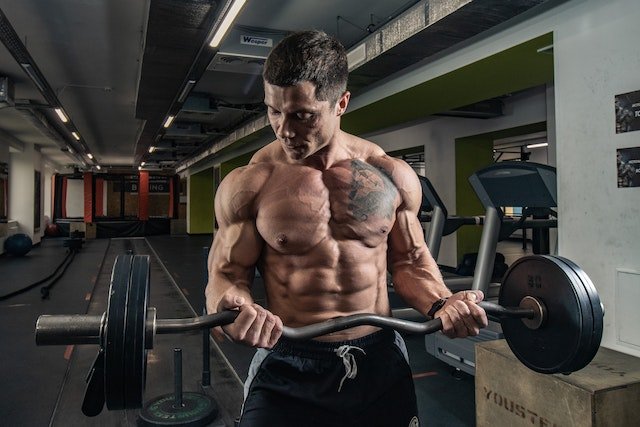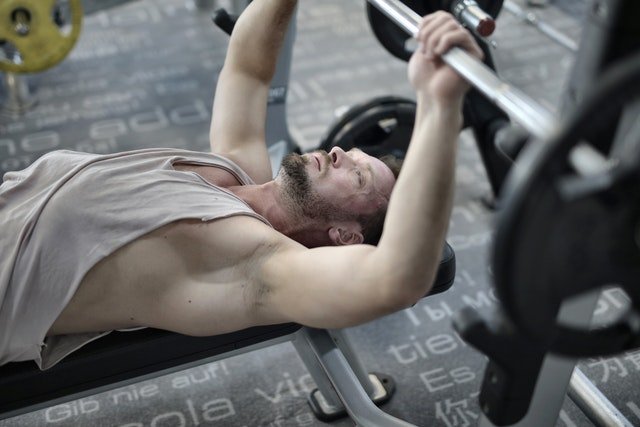
Why Does My Chest Not Feel Sore After A Workout? Solutions For Progress
We all love to work our chest muscles and feel the pump after a great set. Sometimes, despite our best efforts, our chest muscles just don’t seem to get that satisfying soreness that comes with a great workout. Why is this?
There are a few possible explanations and you will want to pinpoint the reasons why so you can make the necessary changes to your workout routine.
First, let’s look at some of the possible reasons why your chest muscles might not be getting sore.
Why does my chest not feel sore after a workout?
If you’re not feeling sore after your chest workout, don’t worry too much as you don’t always have to feel sore and have delayed onset muscle soreness (DOMS) to see results. People have this misconception that to see results, they have to be sore all the time but that’s not the case. However, there are several things that you can do to try and increase the amount of soreness you feel after a workout. Some of these include changing up your routine and the order of your exercises, increasing the volume of your workouts or changing the way you do certain exercises (increase time under tension and negatives etc). Another possibility is that you’re not connecting with your muscles during the exercise. This is often referred to as the mind-muscle connection, and it’s important to maximise the benefits of your workout. Make sure you focus on the muscles you’re trying to target and keep good form throughout the entire exercise.
You dont have to always be sore – your muscles adapt
Whenever we exercise our muscles, they go through a process of adaptation in order to become stronger. This is why we see results from working out, as our muscles adapt and grow in response to the stress that we put on them.
However, this adaptation process can also lead to us not feeling as sore after a workout, as our muscles become used to the exercise and don’t require as much repair.
Getting delayed onset muscle soreness (DOMS) is not always a sign that you had a good workout. Sure, it might mean that you worked your muscles hard enough to cause micro trauma, but it’s not the only marker of a good workout.
There are other things that you should focus on, such as the weight lifted, how the exercises feel and your overall progress.
Feeling sore is very common, especially when doing something new or different, as your muscles are not used to the new exercise and need time to recover.
However, if you find that you’re not feeling sore after your chest workouts, there are a few things you can do to try and increase the amount of soreness you feel.
Change up routine and change exercise order
If you’re not feeling sore after your chest workout, one of the first things you can do is to change up your routine.
This means doing different exercises or changing the order of your exercises. For example, if you usually start with bench press, try starting with a different exercise such as flyes or push-ups.
Changing the order of the exercises you do is also a great way to mix things up and keep your body guessing.
Not only will this help to increase the amount of soreness you feel after a workout, but it will also help to avoid boredom and keep you motivated.
You should always look to change up your routine every 4-6 weeks to prevent your muscles from adapting and to keep seeing results. This is also a good approach as it can help prevent ghetting bored with your workout routine.
Increase volume
Another thing you can do to try and increase the amount of soreness you feel after a workout is to increase the volume of your workouts.
This means doing more sets and reps of each exercise or adding more exercises to your routine.
For example, if you’re used to doing 3 sets of 10 reps on the bench press, try increasing this to 4 or 5 sets. Or, if you’re used to doing 2 exercises for your chest, try adding a third exercise such as flyes or push-ups.
Increasing the volume of your workout will help to increase the amount of soreness you feel after a workout, as your muscles will have to work harder and adapt to the new stress.
However, it’s important to not increase the volume too much, as this can lead to overtraining and injury.
If you find that you’re not seeing results or feeling sore after increasing the volume of your workout, it’s a good idea to back off and stick to a level that you’re comfortable with.

Change the way you do exercises
If you’ve been doing the same exercises for a while, your muscles may have become used to the movement and aren’t as challenged.
This is why it’s important to change the way you do exercises from time to time. For example, if you usually do bench press with a barbell, try using dumbbells instead or if you usually do flyes with dumbbells, try using a cable machine.
Changing the way you do exercises will help to challenge your muscles in a new way and can lead to increased soreness after a workout.
Adding supersets, drop sets or forced reps is also a great way to change up your exercises and make them more challenging.
Also, are you going to failure? This means that you’re lifting a weight until you can’t lift it anymore.
This is important because it challenges your muscles and leads to more soreness.
If you’re not going to failure, then you’re not fully challenging your muscles and you won’t feel as sore.
Don’t forget the benefit of negatives (eccentric phase)
In addition to the above, don’t forget about the benefits of negatives.
Negatives are when you lower the weight slowly (over 3-5 seconds) and then raise it back up as normal. Focus on the eccentric (lowering) portion of the lift. This can be done by lowering the weight slowly.
Doing negatives can help to increase the amount of time your muscles are under tension, which can lead to increased soreness after a workout.
It’s important to only do negatives on the last set of an exercise, as doing them on all sets can lead to overtraining.
A spotter can also be helpful when doing forced reps, drop sets, or negatives as they can help you to get more reps in and increase the intensity of your workout.
Related: Bench Press – Everything You Need To Know – All Your Questions Answered
Time under tension
One of the best ways to increase the amount of soreness you feel after a workout is to increase the time your muscles are under tension.
This means doing exercises for a longer period of time or adding pauses in between reps.
For example, if you’re doing bench press, try pausing for 2-3 seconds at the bottom of the rep and then taking 2-3 seconds to press the weight back up.
Doing this will help to increase the time your muscles are under tension and can lead to more soreness after a workout.
You can also try doing partial reps at the end of your sets. For example, if you can’t do any more full reps, try doing half reps or quarter reps.
This will help to keep your muscles under tension for a longer period of time and can lead to more soreness.
Mind muscle connection
Having a strong mind-muscle connection is important when trying to increase the amount of soreness you feel after a workout.
This means being able to focus on the muscle you’re working and feeling the contraction.
For example, when doing a chest workout, focus on contracting your pecs as hard as you can and really feeling the burn because this will help to increase the amount of soreness you feel after the workout.
If you find it difficult to focus on the muscle you’re working, try doing isometric exercises.
These are exercises where you hold the contraction for a certain period of time, such as holding a weight in the top position of a chest press for 5 seconds.
Doing isometric exercises can help to increase your mind-muscle connection and lead to more soreness after a workout.
The more you can focus on the muscle you’re working, the more likely you are to feel sore after a workout.
Bar path
The bar path is the direction that the barbell takes when you’re doing an exercise. For example, when you’re doing a bench press, the bar path should be straight up and down.
When your bar path strays from the centre of your body, it can cause unwanted tension in your joints and muscles, possibly leading to injuries.
It’s crucial to keep the bar path in mind while doing any type of exercise, because it may assist you to avoid injuries and increase the amount of soreness you feel following a workout.
It will also aid in targeting the muscle you want to work.
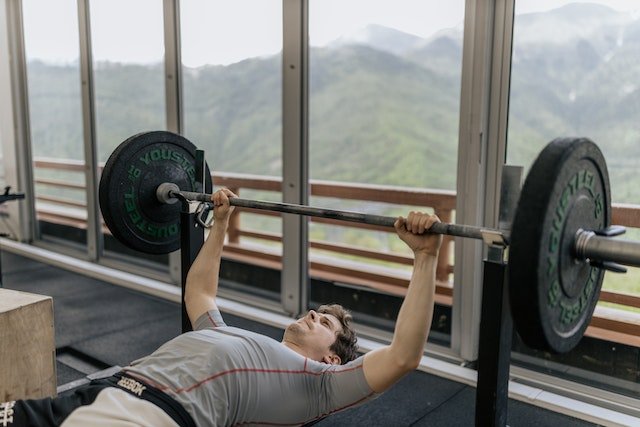
Scapula retraction
Scapula retraction is when you pull your shoulder blades back and down. This helps to engage the muscles around your shoulders and upper back, and can also help to improve your posture.
When doing any type of chest exercise, ensure that you’re targeting the right muscles by retracting your scapulae. This will help prevent you from using other muscles that you shouldn’t be compensating with.
It’s also important to keep your scapulae retracted throughout the entire exercise, as this will help to keep the tension on your muscles and lead to more soreness after a workout.
Not only will this help to increase the amount of soreness you feel after a workout, but it will also help to prevent injuries by ensuring that you’re using proper form.
Related: Should I Still Workout My Chest If It Is Sore? How To Make The Right Decision
Gripping too tight
Gripping the bar too tight is a common mistake that people make when lifting weights.
They think that by gripping the bar tighter, they’ll be able to lift more weight or increase the amount of tension on their muscles.
However, gripping the bar too tight can actually lead to less tension in your muscles and reduced soreness after a workout.
Gripping the bar too tight can cause your muscles to tense up and not work as hard as they should.
If you grip the bar too tightly, it will tire out your muscles sooner than necessary and limit how much lifting you can do.
It’s important to find a balance when gripping the bar. You want to grip it tight enough so that you don’t drop it, but not so tight that your muscles tense up.
Try to relax your grip as much as possible while still maintaining control of the bar. Instead, focus on using a light grip that will allow your muscles to work optimally.
Intensity levels
Your intensity levels are important when trying to feel any after a workout.
If you’re not working hard enough, then you’re not going to feel as sore, but if you’re working too hard, then you might start to feel more pain than soreness.
It’s important to find a balance between the two. You want to work hard enough so that you’re challenging your muscles, but not so hard that you’re causing pain.
A good way to gauge your intensity levels is by using a perceived rate of exertion (RPE) scale.
This is a scale that goes from 1 to 10, with 1 being the lowest intensity and 10 being the highest.
If you’re feeling any pain, then you should back off and lower your intensity level.
However, if you’re not feeling any soreness, then you should increase your intensity level until you start to feel some soreness.
Progressive overload
Progressive overload is when you gradually increase the amount of weight that you’re lifting over time.
This is important because it helps to keep your muscles challenged and leads to more soreness after a workout.
If you’re not progressively overloading, then your muscles will quickly adapt and you’ll stop feeling sore.
To progressively overload, you can either increase the amount of weight that you’re lifting, the number of reps that you’re doing, or the number of sets that you’re doing.
You can also change the type of exercise that you’re doing. For example, if you’re doing chest presses with dumbbells, you can switch to barbells or machine presses.
It’s important to gradually increase the amount of weight that you’re lifting. If you try to lift too much too soon, then you might injure yourself.
Start by adding 5-10% more weight than you’re currently lifting and gradually increase the amount of weight over time.
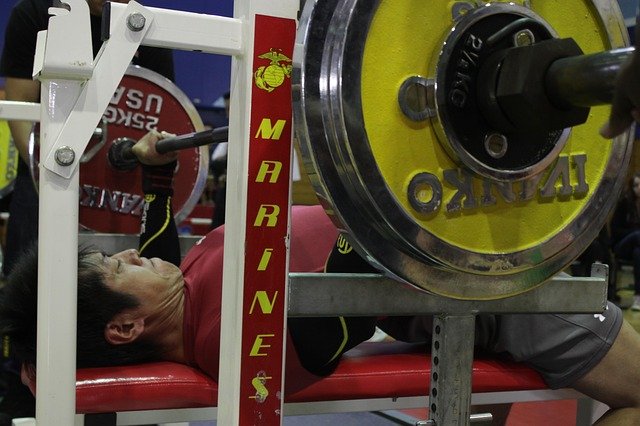
Range of motion
Your range of motion is the amount of movement that you can do with a joint.
If your range of motion is too low, then you won’t be able to fully challenge your muscles and you won’t feel as sore.
This can also happen if your muscles are tight from not stretching enough or the previous session.
To improve your range of motion, you can try doing some dynamic stretching before your workout.
Dynamic stretching is a type of stretching that involves moving your joints through their full range of motion. This can help to loosen up your muscles and prepare them for a workout.
You can also try doing some mobility exercises.
Mobility exercises are exercises that help to improve your range of motion as they stretch and lengthen your muscles.
Some examples of mobility exercises include:
- Pigeon pose
- Downward facing dog
- Bridge pose
- Cobra pose
Exercises to try
If you want to feel sorer after a workout, then you should focus on exercises that target the muscles in your chest.
Some exercises that you can try are:
- Bench press
- Incline bench press
- Decline bench press
- Dumbbell press
- Dumbbell fly
- Push-up
You can also try different variations of these exercises. For example, you can try using different grips or foot positions.
Related: Why is my bench press so inconsistent?
Mental block
One reason why you might not be feeling as sore is because of a mental block. If you’re not believing that you can lift a certain amount of weight, then your body won’t be able to do it.
It’s important to have confidence in yourself and your abilities. If you don’t believe that you can lift a certain amount of weight, then start by lifting lighter weights.
As you get stronger, you can gradually increase the amount of weight that you’re lifting.
If this applies to you, this is where it’s well worth tracking your progress.
Tracking progress
If you are serious about lifting, then you should be tracking your progress.
This way you can look back and see how much you’ve lifted over time. This can help to give you the confidence that you need to lift heavier weights and continue to push forward.
If you want to make sure that you’re making progress, then you should track the amount of weight that you’re lifting.
You can also track the number of reps and sets that you’re doing. Tracking your progress is important because it can help to keep you motivated.
It can also help to show you how much you’ve improved over time. This can give you the confidence to keep pushing yourself.
Final thoughts…
If you’re not feeling as sore after a workout, remember it doesn’t matter, as feeling sore isn’t the only marker of a good workout.
There are other things to focus on like increasing the weight you’re lifting, the number of reps and sets that you’re doing, or the type of exercise that you’re doing.
All of these things can help to increase the amount of muscle that you’re building. Don’t forget to track your progress so you can see how far you’ve come.
In the end, that’s what matters most. So don’t worry if you’re not feeling as sore as you’d like, just keep pushing yourself and you’ll see results. Thanks for reading!
Does your chest not feel sore after working out? Let me know in the comments below.
If you enjoy sport and use CBD to help with your recovery in between gruelling workouts, then you are in the right place. Here at Sport CBDs, we train hard and recover the best way possible…
We have regular workouts (check out the YouTube channel), CBD news and CBD products to help you gain that edge!
If you wanted to check out the reputable CBD we have on offer here at the site, then please head to the Sport CBDs Store (CLICK HERE). We also do fitness clothing and yoga accessories too.
Until next time, all the best…
